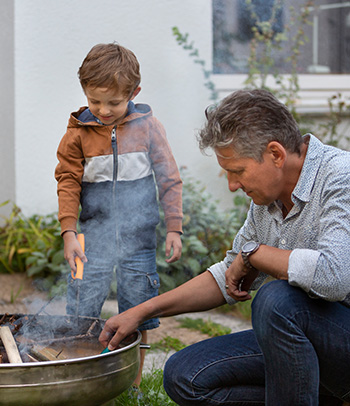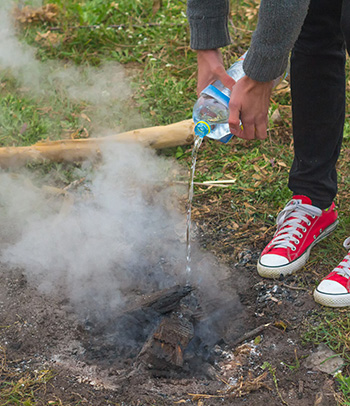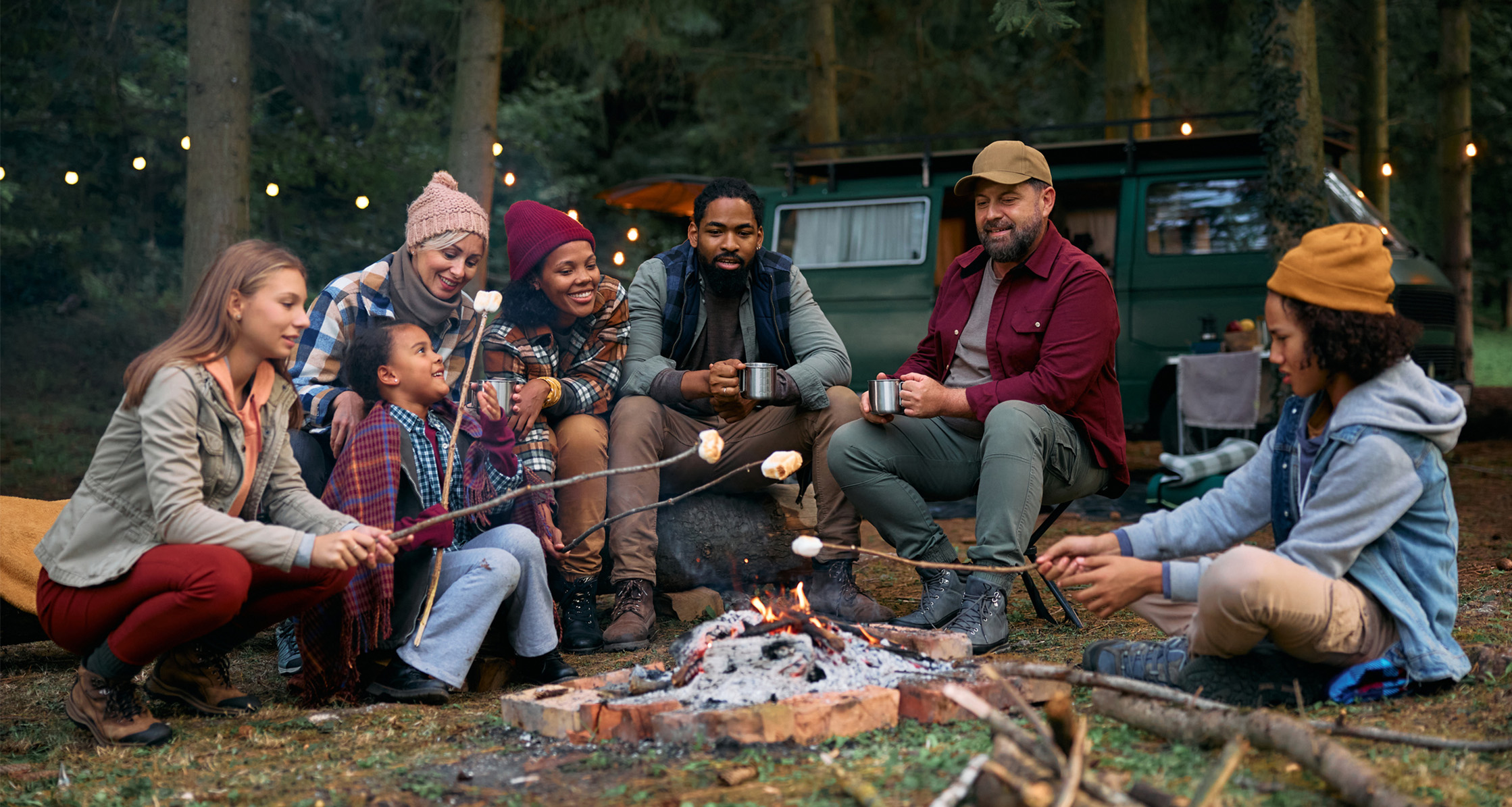To keep everyone safe while protecting your surroundings, it’s important to follow a few simple steps to ensure your next bonfire is a safe one.
Whether you’re roasting s’mores in the backyard or keeping warm after the sun goes down at a campground, a fire can add a lot of fun to your experience. However, many of us are unaware of how unpredictable and dangerous fires can be.
Due to record-breaking heat and dry conditions, many parts of the U.S. are seeing a trend toward longer fire seasons, with some areas now experiencing year-round fire activity. And, according to data from the National Park Service, most wildfires are caused accidentally by people due to careless acts.
To keep everyone safe while protecting your surroundings, it’s important to follow a few simple steps to ensure your next bonfire is a safe one.
Fire Safety Tips
From roasting marshmallows in your backyard to camping trips in the wilderness, check out these fire safety tips from Recreation.gov and Smokey Bear to stay safe:
- Pick your spot carefully. Whether you’re in a campground, on the beach, or in your backyard, where you build your fire is an important safety step. It should be built several feet away from existing trees, shrubs, structures, gear, or other flammable materials. Make sure things are open overhead and stay away from low-hanging branches and other vegetation. Use an existing fire pit or circle if possible. You can also create your own by digging a hole and building a fire ring with rocks to encircle the fire to keep it from spreading.
- Check the fire conditions and local rules. If it’s a dry and/or windy night, avoid building a fire. This type of weather enables a fire to quickly get out of control. Check to see if there are any fire restrictions in place where you are–either in your community, in a park, at the beach, or at a campground–and know the rules about when and where you can have a fire.
- Prepare ahead of time. Clear the site around your fire. Remove any debris, broken branches, or anything else that may be too close to the fire. Flammable objects, like tents or gear, should be kept upwind from the fire and at a distance. In addition, if you’re planning on roasting hot dogs or s’mores, make sure to use long cooking tools that allow you and your family to keep a safe distance from the fire. Avoid wearing clothes that are loose and flowy around the fire, and keep your distance from more flammable fabrics like rayon or linen.
- Build small. While it can be exciting to get a fire going, don’t be tempted to make it too big. Stay well within the fire pit and don’t use gasoline or other accelerants that may make your fire dangerous and unmanageable. Add pieces of wood as you go to keep the fire going, but don’t burn trash, plastic bottles, glass, or cans. You can end up with broken glass and half-melted aluminum in your fire. Burning plastic can release toxic gases into the air. If you’re unsure of the best way to start a fire, check out these step-by-step directions from the National Park Service.
- Stay vigilant. Never leave your fire unattended. Fire is unpredictable, and it’s too easy for things to get out of control within just a few minutes. If you need to step away, make sure someone else is watching the fire.
- Create a safe zone for kids. Children are often unaware of how close they’re playing to a fire and may not pay attention to their surroundings, especially if they’re playing games and running around. It’s a good idea to create a “safe zone” around the fire–an area of a few feet that visibly shows kids how far back to remain.
- Extinguish the fire properly.
 This step is extremely important. Do not leave the area or go to bed until your fire is completely out. After the fire burns down to ashes, pour lots of water on the fire and wait for the hissing sounds to stop, drowning all of the embers. If you don’t have water, use sand or dirt for this step. Then, using a shovel, stir the water, sand, and dirt with the embers, mixing them well. Hover the back of your hand over the ashes to feel their temperature. If it’s still too hot to touch, don’t leave it.
This step is extremely important. Do not leave the area or go to bed until your fire is completely out. After the fire burns down to ashes, pour lots of water on the fire and wait for the hissing sounds to stop, drowning all of the embers. If you don’t have water, use sand or dirt for this step. Then, using a shovel, stir the water, sand, and dirt with the embers, mixing them well. Hover the back of your hand over the ashes to feel their temperature. If it’s still too hot to touch, don’t leave it. - Be prepared for an emergency. If the weather changes or you are forced to leave in a hurry, you have to be prepared to put the fire out quickly. Always keep a bucket of water, a fire extinguisher, or a pile of sand or dirt nearby. In addition, understand what to do in case the fire does get out of hand or if there is an emergency. Do you have a cell phone and reception if you need to call 911? Do you know how to contact the nearest ranger or campground employee if you’re camping? If someone gets a minor burn, you can probably treat it yourself with cool water and a first aid kit, but if the burn is deep and the skin is blistering or charred, seek medical care right away. To learn more about how to treat burns, check out Healthy Homefront’s article on burn safety.
- Think outside the box. Wildfires are occurring more frequently, the weather is getting warmer and drier in many areas, and many fires are started accidentally by humans. Sometimes it might be smarter to consider an alternative to fire. You can use a camp stove that turns on and off quickly to roast hot dogs or s’mores. You can play flashlight tag or use glow sticks to create a fun atmosphere, and you can always tell ghost stories with or without a fire. These creative s’more recipes may be fun to make in the microwave or around your stove at home.
Whether you’re enjoying a backyard BBQ, a camping trip, or a family reunion, a fire is a great way to add some extra ambiance. Make sure you’re prepared and follow these steps to keep your family and your surroundings safe!







